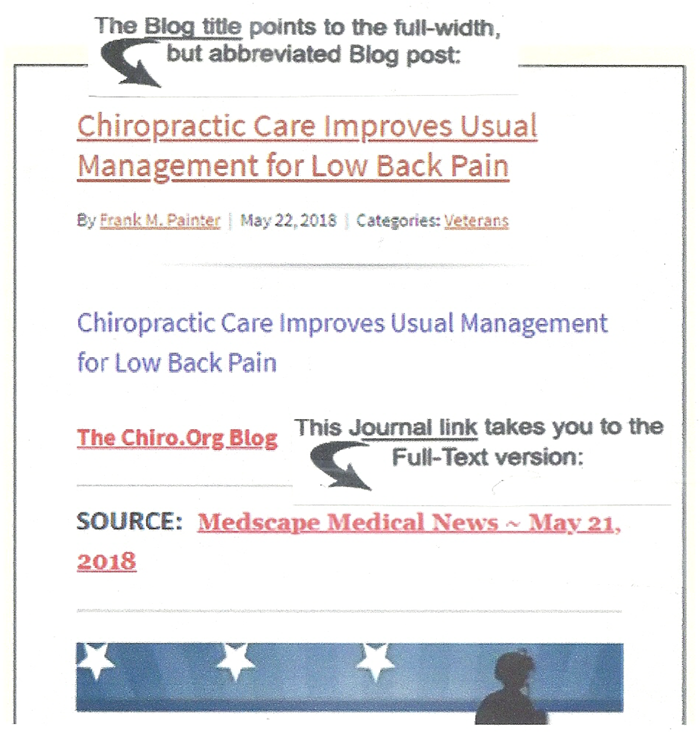Happy 117th Birthday to Chiropractic!
Today is a big day for our Profession, having achieving it’s 117th birthday.
Let’s review the evolution of the profession as discussed on 2 very high quality medical websites:
The Evolution of Chiropractic in Health Care
The scientific merit of spinal dysfunction and therapeutic benefits of spinal manipulation for neuromusculoskeletal conditions were challenged in the early days of chiropractic. Manipulation has been generally accepted for back pain, neck pain, sciatica, joint problems, sprains, strains, osteoarthritis, herniated discs and other musculoskeletal (MSK) conditions.
Scientific evidence has indicated that spinal manipulation is a safe, mild-to-moderate pain reliever for lower back pain, neck pain and headache, and recent health care guidelines have listed it as a viable treatment option for symptoms that do not respond to self-care. [9]
Spinal manipulation in chiropractic medicine has evolved greatly since the first high-velocity adjustment performed by D.D. Palmer in the late 1800s. In addition, chiropractors have begun to embrace a variety of other evidence-based approaches to spine problems. Now, techniques include low-velocity adjustments involving the hands and even instruments and machines, and various other adjustments incorporating many specialized and individualized thrusts. [10]
Modern chiropractic research has started to focus more on the efficacy of specific types of spinal manipulation, including when certain adjustments are performed and how long they are included as part of chiropractic treatment plans. [9] Besides chiropractors, Doctors of Osteopathy (D.O.) and some Medical Doctors (M.D.) and Physical Therapists (P.T.) also perform spinal manipulation.
References:
- Spinal Manipulation for Low-Back Pain.
National Center for Complementary and Alternative Medicine (NCCAM)
http://nccam.nih.gov/health/pain/spinemanipulation.htm
(October 2009) - Chiropractor Profession. Medline Plus
http://www.nlm.nih.gov/medlineplus/ency/article/002001.htm
(October 2009).
 |
Chiropractic care (which comes from the Greek word meaning “done by hand”) dates back to 1895. However, the roots of the profession can be traced all the way back to the beginning of recorded time.
Chiropractic was developed by Daniel David Palmer, a self-taught healer in Davenport, Iowa. Palmer wanted to find a cure for disease and illness that did not use drugs. He studied the structure of the spine and the ancient art of moving the body with the hands (manipulation). Palmer started the Palmer School of Chiropractic, which still exists today.
Chiropractic Education: Doctors of chiropractic must complete 4 to 5 years at an accredited chiropractic college. Their training includes a minimum of 4,200 hours of classroom, laboratory, and clinical experience.
The education provides students with an in-depth understanding of the structure and function of the human body in health and disease.
The educational program includes training in the basic medical sciences, including anatomy, physiology, and biochemistry. The education allows a doctor of chiropractic to both diagnose and treat patients.
Chiropractic Philosophy: The profession believes in using natural and conservative methods of health care, without the use of drugs or surgery.
Chiropractic Practice: Chiropractors treat people with muscle and bone problems, such as neck pain, low back pain, osteoarthritis, and spinal disk conditions.
Today, most practicing chiropractors mix spinal adjustments with other therapies, such as physical rehabilitation and exercise recommendations, mechanical or electrical therapies, and hot or cold treatments.
Chiropractors take a medical history in the same way as other health care providers. They then examine patients, looking at:
- Muscle strength versus weakness
- Posture in different positions
- Spinal range of motion
- Structural problems
They also use the standard set of nervous system and orthopedic tests common to all medical professions.
REGULATION OF THE PROFESSION
Chiropractors are regulated at two different levels:
- Board certification is conducted by the National Board of Chiropractor Examiners, which creates national standards for chiropractic care.
- Licensure takes place at the state level under specific state laws. Licensing and the scope of practice may differ from state to state. Most states require that chiropractors complete the National Chiropractic Board examination before they get their license. Some states also require chiropractors to pass a practical examination. All states recognize training from chiropractic schools accredited by the Council of Chiropractic Education (CCE).





What also is exciting is the new documentary touting chiropractic for chronic pain. This exposure will be a great way to celebrate chiropactic’s birthday.
I agree with Russell about chiropractic and chronic pain. As many of us realize healthcare insurance third party payors usually only reimburse for acute care. They won’t be in hurry to embrace chiropractic and chronic pain. Which to me is ridiculous. Chiropractic care cost is miniscule compared to other health care cost.